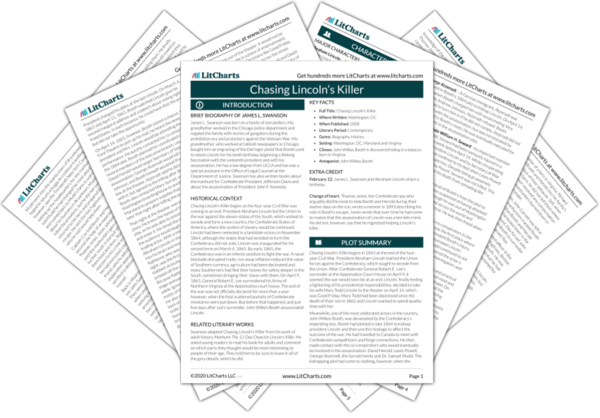Booth’s plan to blur the theatrical and the real worked well. The president and his companions were focused on the action of the play and did not notice Booth’s entrance. After Booth shot the gun, the audience had difficulty discerning whether the loud sound was part of the play or not. At the same time, Lincoln’s body began its final struggle to hold onto life. Despite the president’s physical strength, which was hidden from many by the haggard look of his face, he had no chance of surviving the bullet wound to his brain.


